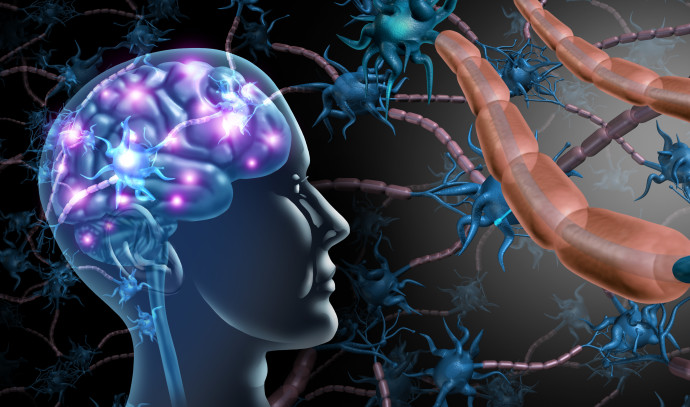A large-scale international study led by Tel Aviv University found that an experimental drug that received the status of an orphan drug from the FDA for future treatment of a rare developmental syndrome may also cure a variety of symptoms related to autism, mental retardation, and Alzheimer’s.
The experimental drug (NAP) was discovered in the laboratory of Prof. Ilana Gozs of the Department of Molecular Genetics of Man and Biochemistry at the Tel Aviv University School of Medicine. In recent years, the FDA has given the experimental drug a special route for approving the status of an orphan drug for a rare developmental syndrome that affects the brain, muscles, and gastrointestinal tract, ADNP syndrome.
In the current study, an innovative model developed in mice, the research team led by Prof. Gozes found that the experimental drug (NAP) may be effective in treating a wide range of symptoms of ADNP syndrome – a mutation in the ADNP gene that is essential for brain development and protection of brain nerve cells. Previous studies have found that ADNP syndrome is associated with Alzheimer’s disease and certain types of mental retardation, developmental delay, and autism.
Ramot – the commercialization company of Tel Aviv University, has filed a number of patent applications protecting the technology and its application, and is raising, in collaboration with Professor Gozes, funding for further clinical research. Levels are also in discussions about commercial collaboration with drug companies. “We are excited about the new discovery and believe it is a groundbreaking technology that will cure a variety of symptoms and disabilities in a wide range of orphan diseases,” said Keren Primor Cohen, CEO of Ramot.
A team summarizing the doctoral dissertation of student Gideon Carmon also participated in a team of researchers from Prof. Guzs’ laboratory: Dr. Shlomo Sargovich, Gal Hacohen-Kleiman, Inbar Ben-Horin-Hazak, Oksana Kapitansky, Alexandra Lubintseva and Dr. Eliezer Giladi, and alongside them Dr. Moran Rubinstein, Prof. Noam Shomron and Guy Shapira, from the Faculty of Medicine, and Dr. Masada Pasmanik-Shor from the Faculty of Life Sciences at Tel Aviv University. Researchers from the Czech Republic, Greece, Germany, and Canada also participated. The article was published in the prestigious journal Biological Psychiatry.
Prof. Gozes explains that “NAP is in fact a short section of normal ADNP protein. In the past we have found that treatment with NAP corrects the function of human neurons with in vitro ADNP syndrome in the laboratory. In the present study we sought to examine With the most harmful mutation that allows for the observation of brain development and allows for the correction of behavioral problems. ”
The study, which examined a model of mice with ADNP syndrome, evaluated behavior, electrical activity and protein identification in the brain using objective measurement methods. The researchers found that the mice with the syndrome were characterized by a wide range of pathological symptoms that were manifested in postpartum mortality, slow development and abnormal gait mainly in females, as well as poor vocal communication.
Brain tests revealed additional findings: a relatively small number of synapses – the meeting points between nerve cells, impaired electrophysiological activity indicating low potential for normal brain stimulation, and Tau protein precipitation in young mice, similar to those in the brains of elderly Alzheimer’s patients.
For most of the symptoms, the researchers examined the effect of the drug NAP – a short and normal segment of the protein ADNP, the same protein that is damaged by the mutation. Prof. Gozes: “In the past, we found that NAP corrects dysfunction of ADNP that was mutated in a culture of neurons in culture. We have now examined its effect on the animal body – in animals suffering from the syndrome (mutation in ADNP). To our amazement and joy, The mice in most of the phenomena mentioned above. ”
In addition, the researchers sought to identify in the blood of the model mice a significant biological marker of ADNP syndrome, which would make it possible to diagnose the serious illness and monitor the effectiveness of the treatment using a simple blood test. Using genetic sequencing technologies, they detected a deviation from the norm as well as a correction by NAP in five proteins (at the level of messenger RNA), in a way that characterizes only females. Protein plays an important role in the formation of synapses in the brain and healthy aging.
Prof. Gozes concludes: “The study examined the effect of a mutation in the ADNP gene on model mice in a wide range of aspects, and found extensive impairment in their physical and brain function – equivalent to autism symptoms, developmental delay, mental disability, and Alzheimer’s disease in humans. “A short section called NAP from a normal ADNP protein, and we found it to be effective against most symptoms in mice. We hope and believe this study is an important milestone in the development of a drug or drugs that will help children with autism due to genetic mutations, as well as Alzheimer’s patients.”
